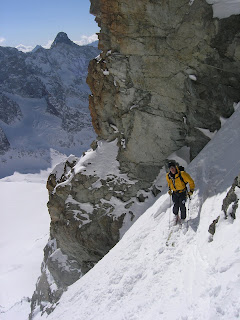 As an avalanche educator, BC ski guide and passionate skier, I have noticed several trends with new users of the winter backcountry that may contribute to the rising accident rate this winter.
As an avalanche educator, BC ski guide and passionate skier, I have noticed several trends with new users of the winter backcountry that may contribute to the rising accident rate this winter.
With snowshoeing, people have not tried to understand that the winter environment is dynamic. Without proper education any travel in avalanche terrain is Russian roulette without some knowledge of safe travel and terrain evaluation techniques. The books about snowshoeing that are published, I did read the mountaineers books on the subject, do not spend more than a brief chapter on avalanche phenomena. Snowshoeing is not the same as hiking since the terrain in winter can be hazardous when in summer it is just a trail and learning the difference is the key.
With education, the expectation that avalanche courses should be less expensive or you should not have to spend money on safety gear is a poor argument when you consider how much you spend on your car to make it safe. Compare snow travel to scuba diving and there are similar safety protocols and expenses with getting started but once you get thru the initial costs it pays off with the safe travel you will be able to do.
As for notices and who should inform the public, neither Alpental or the USFS should be responsible for individuals on public land. To ask them to do so will also bring the the responsibility of restricting access if the hazard is deem too high. In the US, we do not fund the USFS to conduct such practices. We do give private enterprise the responsibility to do so if they manage other hazards as well such as ski areas.
What is the solution? First anyone who would like to travel in the backcountry needs to get educated on the skills necessary to go out there and understand the hazards that exist. Snowshoes and snowmobiles are just tools like skis and snowboards and need to respect the same practices other users have learned to conduct their activities.
Once that is realized, then critical mass will help avalanche course providers offer courses specific to the different users. Publishers are also responsible for printing current information and not informing snowshoers that travel in avalanche terrain demands the same respect and education by all travellers, not just skiers and snowboarders.
Until we reach that understanding, then avalanche education will be looked at as just another expense preventing people from getting their backcountry experience cheap and easy.


Leave a Reply